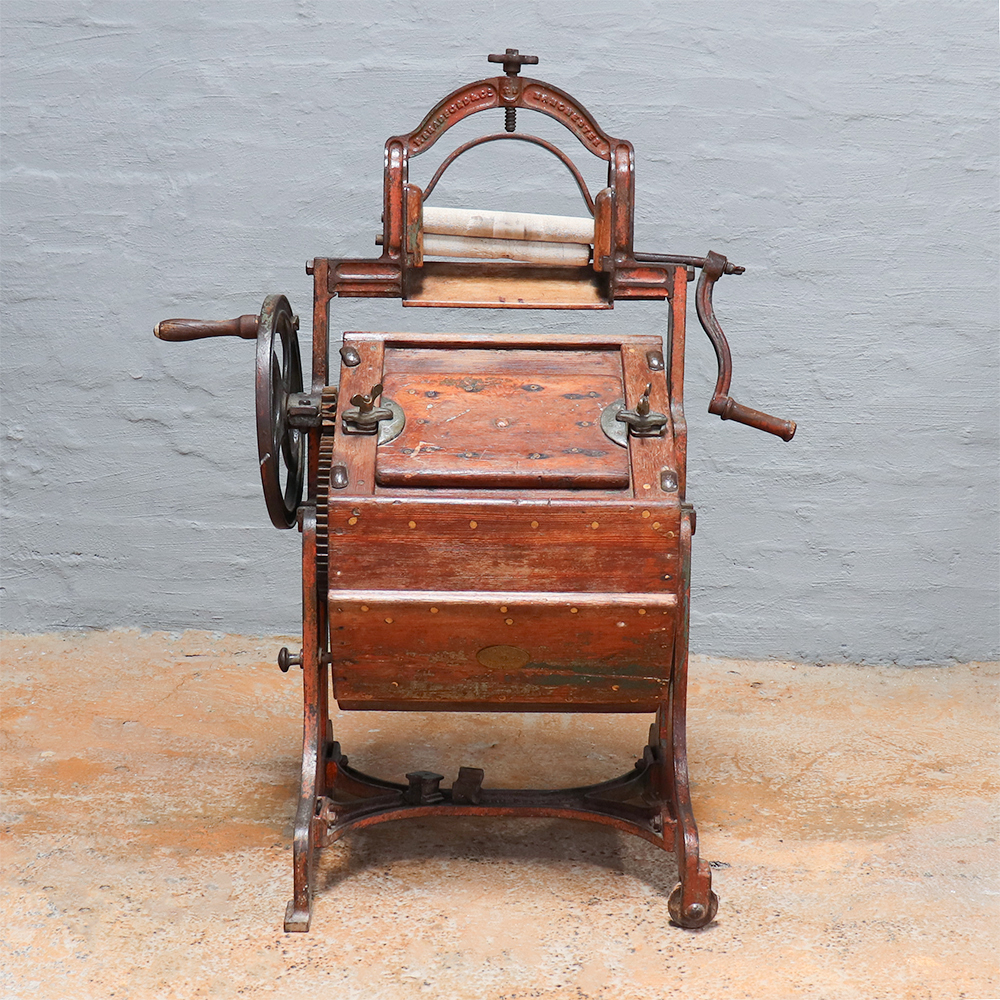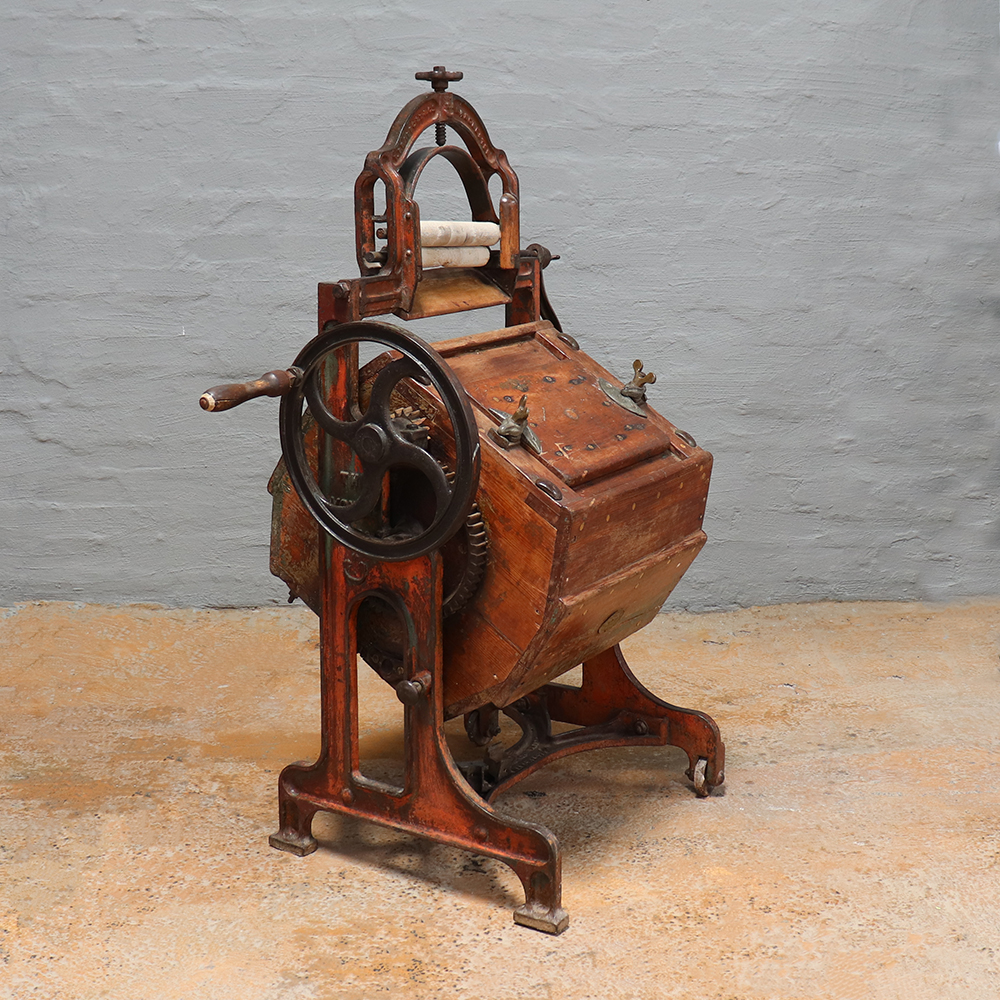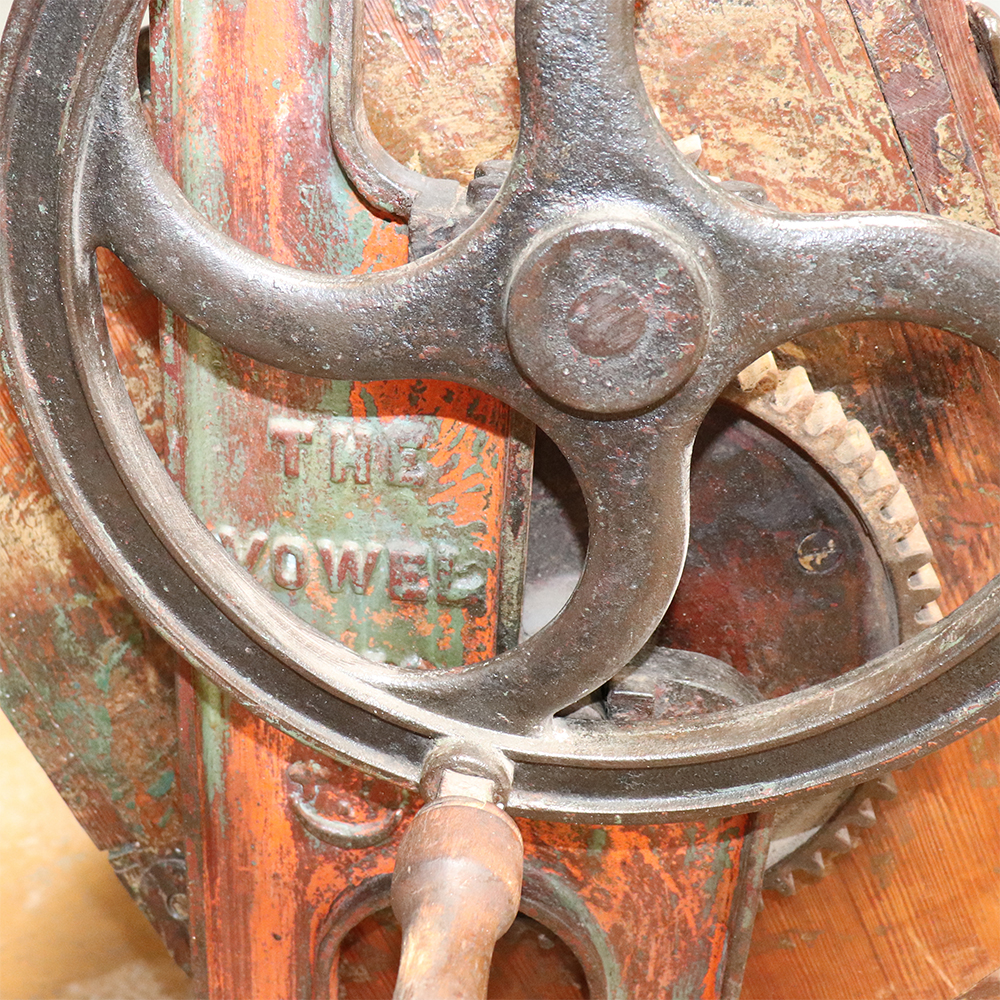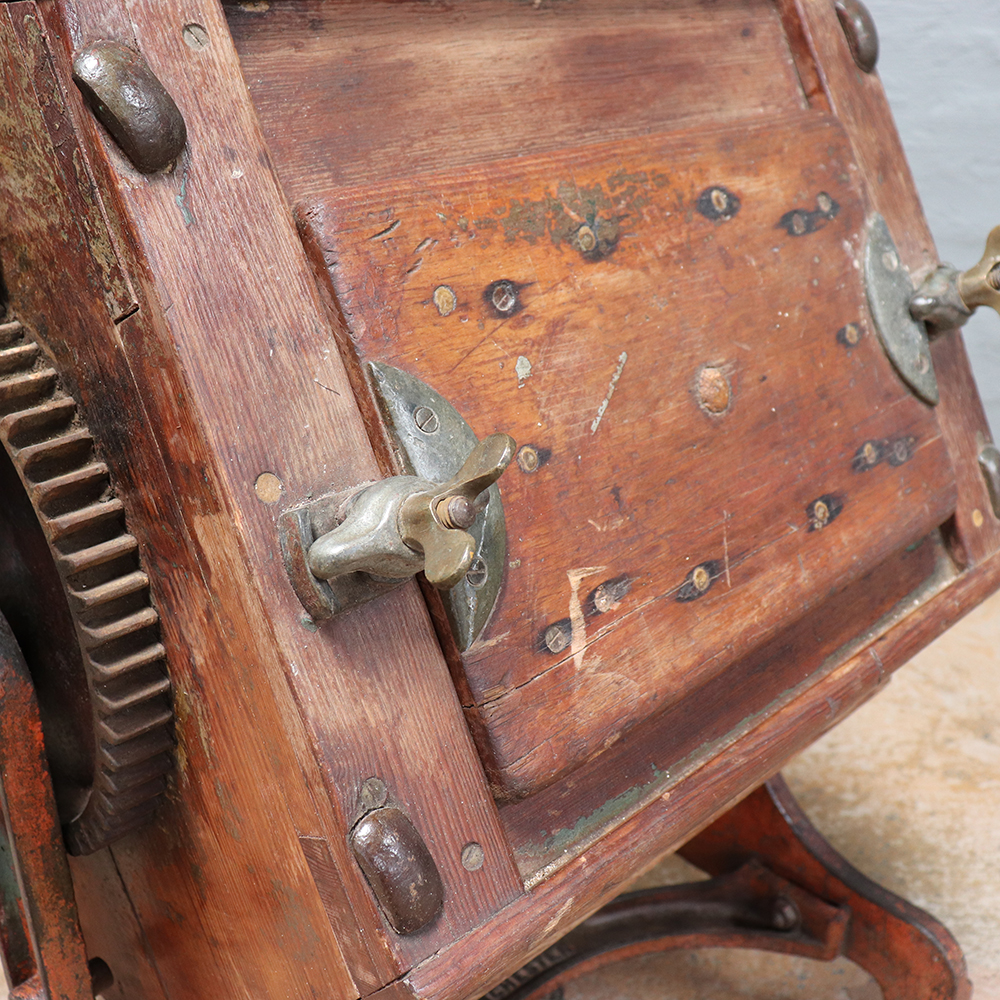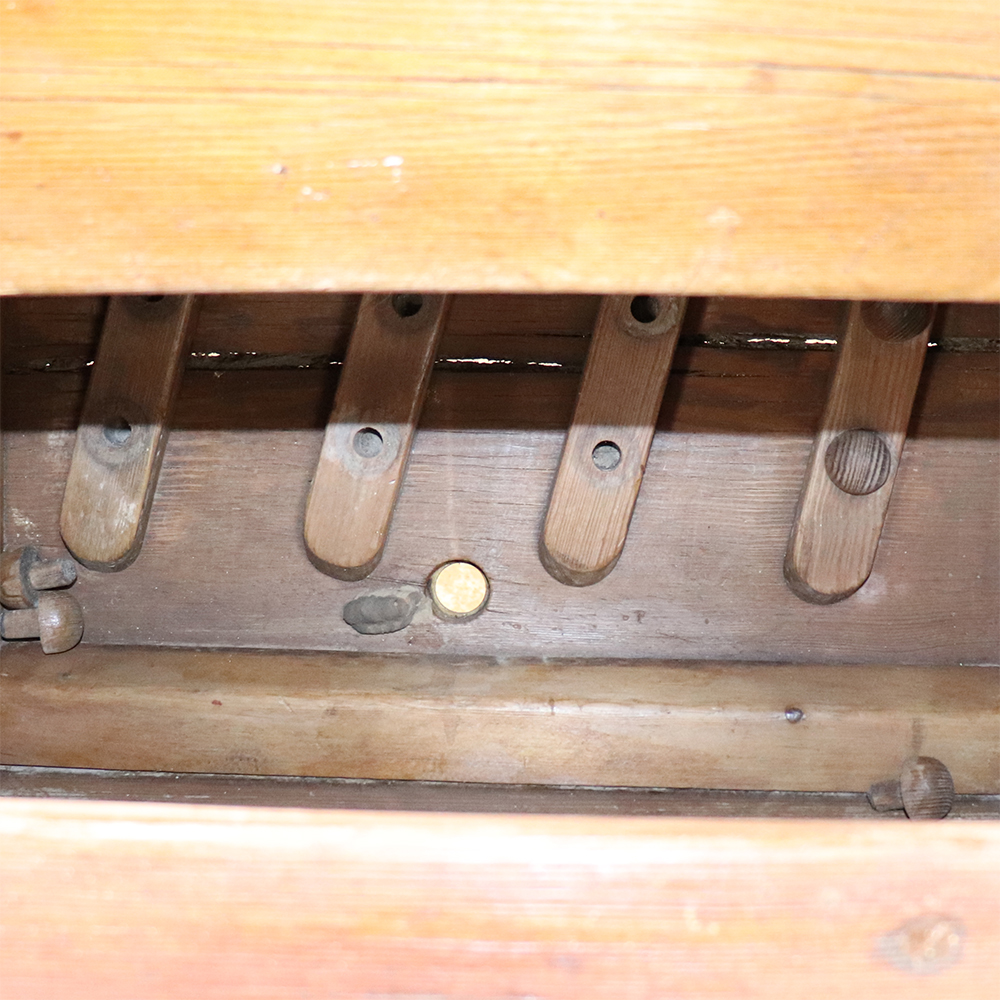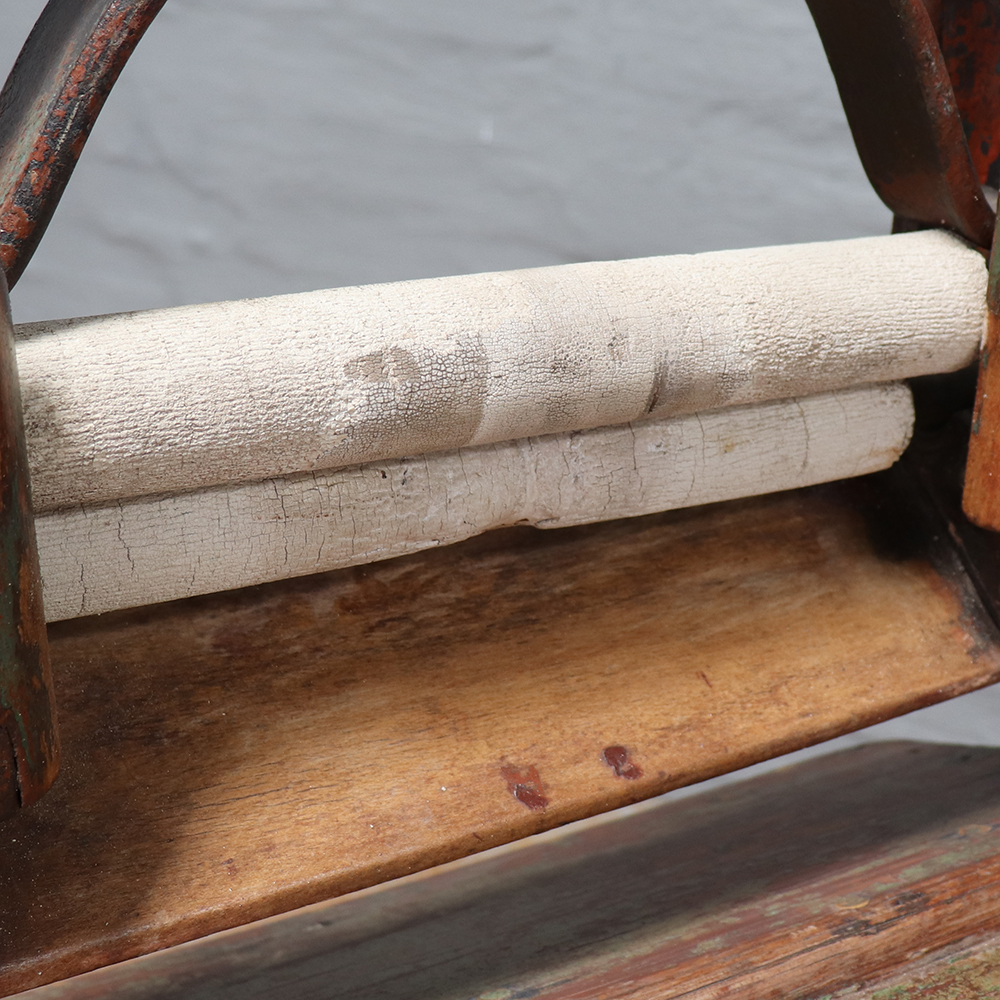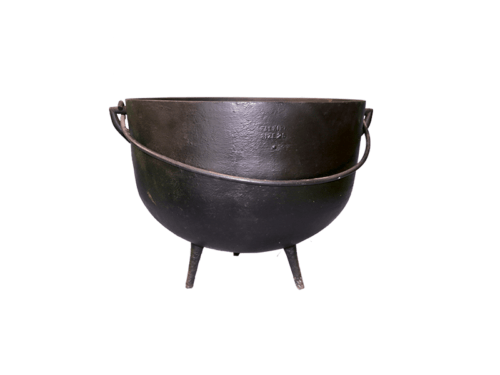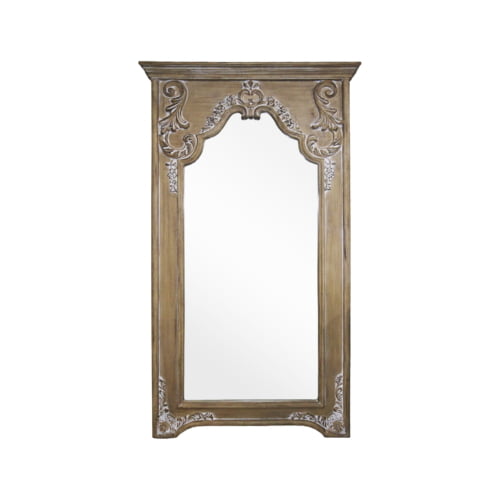Antique Washing Machine
R25,999.00
Description
The Vowel “Y” Original cast metal & wood industrial antique washing machine: UNITED KINGDOM – APRIL 29: This popular model was made in many sizes by Thomas Bradford of London and Manchester, the most famous 19th century washing machine manufacturer. The washing is placed in the hexagonal wooden tub and rotated by the handle on the left. Wooden slats inside the tub help to tumble the clothes. 3/4 view, barrel open.
The main body of the machine was a large tub, often cylindrical or barrel-shaped, made from wood slats bound with metal bands, similar to a traditional water barrel. These tubs were designed to be watertight to hold soapy water for washing clothes. Oak was commonly used because of its strength and resistance to warping, but other durable hardwoods were also used.
The wooden washing machines usually included a hand-cranked agitator, which could be operated via a lever or crank handle on the side of the machine. The agitator consisted of paddles or vanes inside the tub, often attached to a central shaft that extended through the lid. As the handle was cranked, the paddles moved back and forth, causing water to circulate and agitate the clothes.
Most wooden washing machines had a wringer attached to the top or side of the tub. The wringer, with two rollers and a crank, was used to squeeze excess water from clothes after washing. Some models allowed the wringer to swivel so users could easily wring out clothes into another container or drain without lifting wet items out of the tub.
Since these machines were quite heavy and could not be easily tilted, they included a spigot or drain hole near the bottom to empty out used wash water. A wooden plug or metal valve was typically used to control drainage, allowing users to quickly release water when the washing process was complete.
Wooden washing machines often had a lid that closed over the top to prevent water from splashing out during agitation. In many models, the lid also helped keep the agitator stable while in use. Some versions included a locking mechanism on the lid to prevent accidents, especially when wringers were attached.
Although primarily functional, many wooden washing machines had a polished or varnished finish for protection against water damage and to enhance their aesthetic appeal. Decorative touches, such as brass or iron fixtures and engraved brand logos, were also common, giving these machines a rustic yet elegant look.
Because they were made of wood, these machines required special maintenance to prevent water damage, swelling, or cracking. Over time, users would need to reseal or oil the wood to maintain its waterproof qualities. Some antique models have survived due to careful preservation of the wood and metal components. You might also like our Antique Cast Iron pot
Additional information
| Dimensions | 1030 × 620 × 1340 mm |
|---|---|
| Condition | Used |

